As stated last week, October 1st 1956 was the first day of business for the new Paramount Cartoon Studio. Here is the settlement agreement between Paramount and Kneitel/Sparber that ended Famous (click to enlarge):

(I cannot explain why this 1957-58 trade advertisement still credits “Famous Studios” – but it does.)
Paramount, having made a deal with UM&M and AAP in the past two years, had one more block of shorts for sale: the cartoons produced since the 1950-51 season, and all the live action shorts from that period as well (Sportlights, Pacemakers and Toppers). They began to seek a buyer to take it all – including the animation studio itself – off their hands. Paramount began their search by approaching its profitable comic book licensor – Harvey Comics – in 1957.
Strangely enough, the Harvey brothers were interested. The deal would include the animation studio and its equipment, the films, and the employee contracts. Harvey could have all the films for television syndication, all the copyrights for the characters (dating back to the Fleischer era), all the merchandising and licensing. One withholding: Paramount would retain the theatrical rights to the films, so they could still release a full slate of shorts. Heck, Paramount would even pay Harvey to produce 16 new theatrical cartoons each year for several years.
Though a contract was drawn up in 1957 between Paramount and Harvey, that initial deal was not consummated. Harvey Comics just didn’t have the kind of money Paramount was looking for. But Harvey didn’t exactly close the door. They spent most of 1957 and part of 1958 looking for a way to find the money and make a deal. They spoke with Guild Films and AAP to se what kind of advances they could get if they could provide the 1950-59 Paramount cartoons to an established TV syndicator.
As for the 20 titles released during the 1957-58 season – Popeye was no longer being newly produced, but Paramount made available a fresh set of Popeye Champions (aka re-releases) available to theaters. Casper, Herman and Katnip and Noveltoons would showcase a last hurrah for the Famous crew (all three series having been in production before the budgets were slashed, numerous staff cuts and the yearly order reduced – this explains the odd-number of 11 Noveltoon releases). This would also be the last season for Isadore Sparber – who passed away on August 28th 1958 – a little less that two weeks after the release of his last (and one of his best) film, Chew Chew Baby.
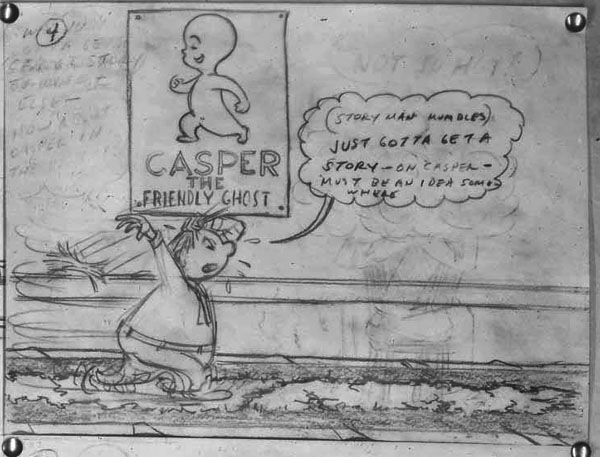
Six (6) Casper cartoons
BOO BOP (11/11/57) Kneitel/Golden. Casper helps the ghost of Franz Schubert finish his unfinished symphony.
HEIR RESTORER (1/24/58) Sparber/Eugster. In England, Casper helps another ghost find an heir for Lord Montegue.
SPOOK AND SPAN (2/28/58) Kneitel/Waldman. Casper helps Squeally the pig clean up to win the county fair.
GHOST WRITERS (4/25/58) Kneitel/Johnson. In this clever cheater, two writers at Paramount Cartoon Studios wrack their brains trying to come up with a good story for Casper. They consider using ideas (via stock footage) from Casper’s Spree Under The Sea, Once Upon A Rhyme and Too Boo Or Not To Boo.
WHICH IS WITCH? (5/2/58) Kneitel/Johnson. Wendy blames Casper for of Spooky’s practical jokes.
GOOD SCREAM FUN (9/12/58) Knietel/Pattengill. Casper tries to find a home for Ozzie the Ostrich.
Three (3) Herman and Katnip cartoons
ONE FUNNY KNIGHT (11/22/57) Tendlar/Pattengill. Set in medieval times, Herman rescues Princess Gwenivere who has been captured by robber-baron Katnip.
FRIGHTY CAT (3/14/58) Sparber/Johnson. In an abandoned insane asylum, Herman tries to drive Katnip mad and ultimately out of the building.
YOU SAID A MOUSEFUL (8/29/58) Kneitel/Johnson. In Katnip’s Pizzeria, Herman tries to help Chubby slim down to save him from Katnip.

“One Funny Knight”

“One Funny Knight”
Eleven (11) Noveltoon cartoons
This is one of the best seasons of Noveltoon releases as, in my humble opinion, several of the miscellaneous subjects here work on their own terms. They don’t hold a candle to Warners, UPA or even the Deitch Terrytoons, but – with the exception of the two cheaters, and the “Baby Huey” (which is marred by its limited animation) – these pictures are somewhat entertaining and visually interesting. A brief look of where the studio was headed artistically before the budgets were drastically cut.
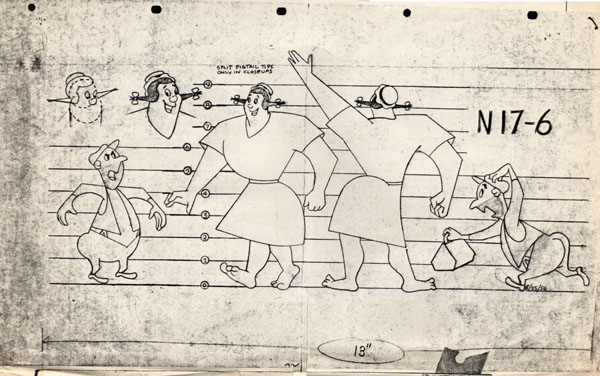
“Possum Pearl”
POSSUM PEARL (9/20/57) Kneitel/Johnson. Man-hungry musical hillbilly gal Possum Pearl (last seen in Popeye’s Hill-billing and Cooing) sets her sights on an burglar (“Slippery Sam”) looking for a hide out.
JUMPING WITH TOY (10/4/57) Tendlar/Pattengill. The Fox disguises himself as Santa Claus so he can get Baby Huey. With this film, the lower budgets and limited animation begin to be noticeable.
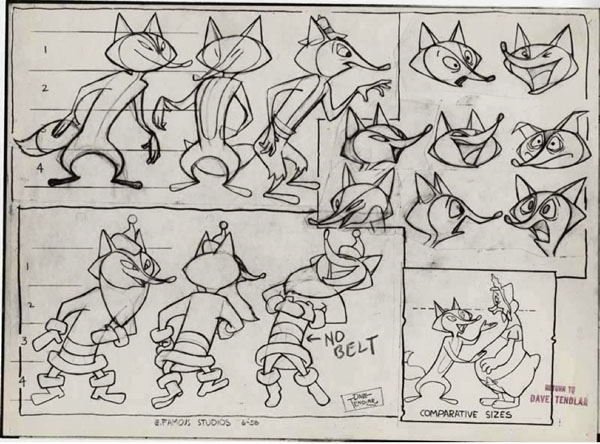
“Jumping For Toy”
JOLLY THE CLOWN (10/25/57) Kneitel/Eugster. An update of “Koko The Clown”, Jolly the Clown and Ellsworth Elephant get kicked out of the Big Top by a cruel ringmaster.
COCK-A-DOODLE DINO (12/6/57) Sparber/Golden. A dinosaur egg falls off a truck and into the nest of a farm chicken – who raises the dino (“Danny”) as her own. Note: two in-jokes – the Mama chicken names her first two hatchlings “Alfred” and “Harvey” in honor of the cartoons soon to be owner, Alfred Harvey; and Danny is taken away to “Famous” Circus (which uses the studios now-defunct logo).
DANTE DREAMER (1/3/58) Sparber/Eugster. A strong attempt to do a UPA stylized film, little Dante (ala Warner Bros. Ralph Phillips) day dreams himself a knight fighting a fire breathing dragon.
SPORTICLES (2/14/58) Kneitel. Jackson Beck narrates this cheater in the style of a “sports” newsreel, using stock footage from previous Screen Songs that involve gags about fishing, duck hunting, golf, baseball, wrestling, boxing, horse racing, boat racing, and bullfighting.
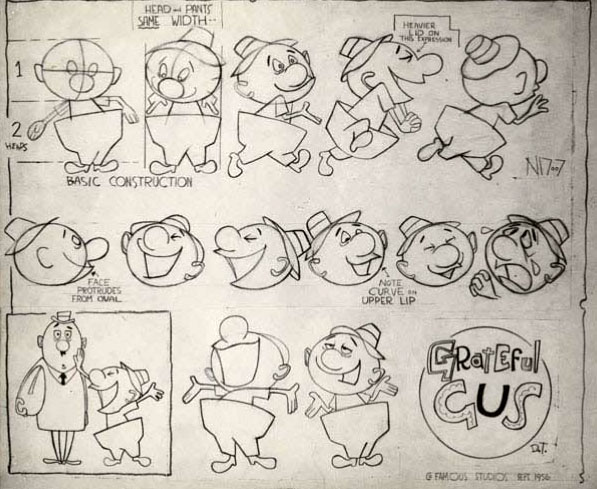
“Grateful Gus”
GRATEFUL GUS (3/7/58) Tendlar/Tafuri. A crooked bank teller steals money from his bank only to be hounded by panhandler Grateful Gus. This is as close to a personal film ever done by Dave Tendlar.
FINNEGAN’S FLEA (4/4/58) Sparber/Johnson. A bartender recounts the story of Finnegan and his singing flea – a story that echo’s Chuck Jones’ One Froggy Evening.
OKEY DOKEY DONKEY (5/16/58) Sparber/Eugster. A redesigned UPA-stylized Spunky the Donkey falls in love with Marilyn, a merry-go-round horse.
CHEW CHEW BABY (8/15/58) Sparber/Johnson. A cult classic – An American tourist in Africa invites an African cannibal to Cincinnatti to eat… err, meet his friends. NOTE: An in-joke, a car license plate seen is actually the film’s production number: N-17-13.
TRAVELAFFS (8/29/58) Kneitel. A cheater, using stock footage from previous Screen Songs that involve gags about different locales, including Michigan, Illinois, Mississippi, California and Mexico.
Story Board Panels from Chew-Chew Baby.
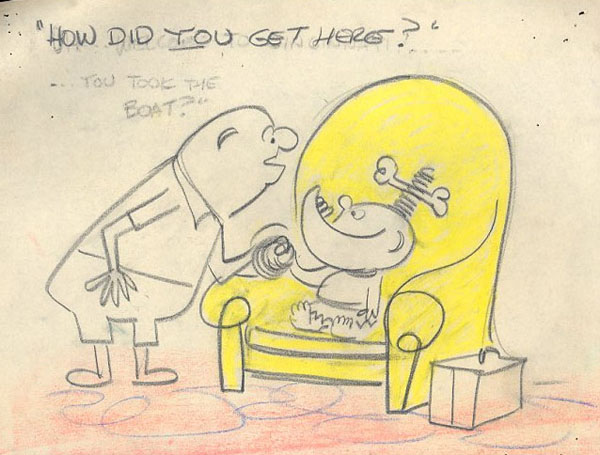


(thanks to Ken Layton)


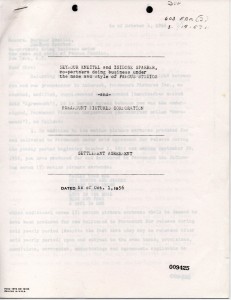

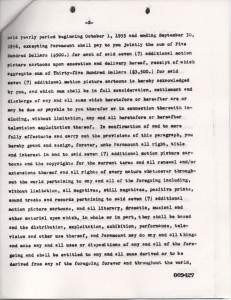




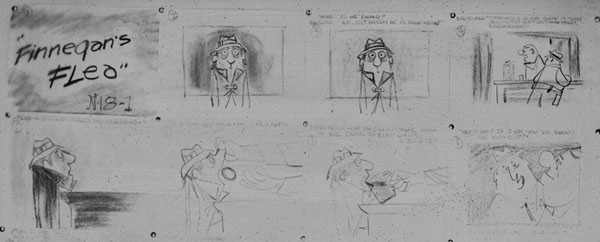
 Jerry Beck is a writer, animation producer, college professor and author of more than 15 books on animation history. He is a former studio exec with Nickelodeon Movies and Disney, and has written for The Hollywood Reporter and Variety. He has curated cartoons for DVD and Blu-ray compilations and has lent his expertise to dozens of bonus documentaries and audio commentaries on such. Beck is currently on the faculty of CalArts in Valencia, UCLA in Westwood and Woodbury University in Burbank – teaching animation history. More about Jerry Beck [
Jerry Beck is a writer, animation producer, college professor and author of more than 15 books on animation history. He is a former studio exec with Nickelodeon Movies and Disney, and has written for The Hollywood Reporter and Variety. He has curated cartoons for DVD and Blu-ray compilations and has lent his expertise to dozens of bonus documentaries and audio commentaries on such. Beck is currently on the faculty of CalArts in Valencia, UCLA in Westwood and Woodbury University in Burbank – teaching animation history. More about Jerry Beck [



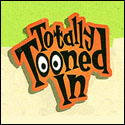



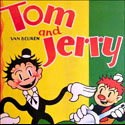
Yeah it’s rather sad to watch “Jumping With Toy” and realized we you’re seeing it basically the key drawings being animated without any inbetweens. It’s jarring, it’s almost like growing pains for a studio that had to to be accustomed to this sort of thing now that they had to go with limited animation. Interesting redesign on the fox otherwise, too bad this will be his last appearance in a Baby Huey Noveltoon otherwise.
Actually, Paramount released one more Baby Huey cartoon in 1959, HUEY’S FATHER’S DAY.
I know that was the last cartoon. I was referring to the fox’s last appearance since only Huey and his dad are in that other cartoon.
Regarding your last comment: Huey’s mom is in the other one.
We get, by this period, more classic Winston Sharples’ stock cues..soon to be in the Felix and later NY cartoons…
(The very first, THE MAGIC BAG) has cues from “Cock a Doodle Dino”, from that season as well as “From Mad to Worse” and “Ghost of Honor” from the previous and “Felineous Assault” from the 1959 one.
From this (1957-58) season, here’s some cartoons that were cue sources:
Boo Bop
One Funny Knight
Cock-a-Doodle Dino
Dante Dreamer
Heir Restorrer
Ghost Writers
I have some Felix’s that had cues from some other these, incuding Dante’s crazy chase cue (Dante Dreamer not not reminds me of Ralph Phillips but of Cervantesa’s Don Quixote, espexially the medieval setting of the fantasy.. wonder if the hugely popular alt.rock band Imagine Dragons saw this and named themsevles after it…) Very amusingly stylized short…
Soon later, cartoons like Chew Chew Baby and later, would be in Modern Madcaps..
I, for one, was always amazed and enchanted by the late-50s “Modern Madcap” style!
Always good to see Dave Tendlar’s model sheets, and how he adapted to the new style.
Seem like few of these Noveltoons this season like “Chew Chew Baby” probably spurred “Modern Madcap” as the new series to coincide with Noveltoons from 1958 onward.
Whether it was the shock of the change in studio status or the need to do something with the animation budget cuts to make the shorts entertaining, the quality of the stories at Paramount really picked up this season, and not just in the Noveltoons. The standard formula cartoons are few and far-between (i.e. — no more than what Warners was doing at the time with some of their continuing series with Pepe, Speedy or Hippity Hopper). The studios overall reputation would have been a lot higher if the all the cartoons had been written as well as they were for the 1957-58 season.
“The Phil Silvers Show” was still being made in New York at this time, so before he joined Famous alum Arnold Stang as part of the “Top Cat” gang out in Hollywood, Maurice Gosfield got his animated voice career going in Dave Tendlar’s final cartoon for Paramount (which also probably contains the most effective UPA-style layouts of any Paramount cartoon, with the perspective shots of Gus and the bank teller moving away and towards the camera).
Cartoon Champions (reissues) for the 1957-58 season:
“Deep Boo Sea”
“Spunky Skunky”
“Cat-Choo”
“Audrey the Rainmaker”
“Cat Tamale”
“By Leaps and Hounds”
“Scout Fellow”
“Cat Carson Rides Again”
“The Awful Tooth”
“Law and Audrey”
“City Kitty”
“Clown on the Farm”
Popeye Champions (reissues) for the 1957-58 season:
“Tops in the Big Top”
“Wotta Knight”
“Tar with a Star”
“How Green Was My Spinach”
“Fistic Mystic”
“Safari So Good”
“Barking Dogs Don’t Fite”
“Baby Wants Spinach”
On Boo Bop note that it’s reminiscent of two Popeye cartoons Sock a Bye Baby and QUIET! Please where Casper trys to help out the ghost of Franz Schubert finish his Unfinished Symphony by eliminating all outside noise from a noisy junk cart to the noise of a busy city.
Note also that gag in Ghost Writers as the camera pans the hallway of Paramount Animation Studios and on the third scene, there is a gun in a case with the words “In Case If You’re Fired” – hinting that if the cartoon writer was fired from his job that he kills himself with that gun. A sad irony of that gag which is now considered unfunny due to the workplace violence that is going on today’s workplace, and I wonder if that gag in Ghost Writers has been edited out or censored on today’s tv rebroadcasts?
Cock-a-Doodle Dino, Okey Dokey Donkey, Possum Pearl and Dante Dreamer were my favorites that I’ve seen later on syndication and on The New Casper Cartoon Show that aired on ABC in the 1960’s. On Dante Dreamer it was one of the more unusual cartoons that I’ve seen due of the character design on Dante and his mom.
And on Chew Chew Baby that was one of the first Noveltoons that was banned from broadcast due of its contents – including the scenes where the little cannibal (who looks different than the usual stereotype “African Cannibals” I’ve seen) meets the people on the street and eats them! (Note that they go offscreen by using a snapping noise sound effect – then later going on-screen where the person who was standing next to the Cannibal “disappear”.)
The “stop that noise” plot was also used in what I think was Seymour Kneitel’s final cartoon, “Space Kid”, starring Kozmo the Martian.
https://www.youtube.com/watch?v=kVesn2cLob8
Was this the season that the vocal theme songs for Casper, Little Audrey, and Herman and Katnip were dropped, or had those already been replaced by instrumental themes by this point?
The revised openings with the shorter themes for Casper, H&K and Audrey came in 1955.
Thanks. It’s been so long since these cartoons have been available without abbreviated, re-edited title sequences that I couldn’t remember. Back in the dark ages, when these cartoons were running on TV uncut, my brother used to complain about how long some of the theme songs were and how long it took to get past them and into the cartoon. When you’re that young, I guess you don’t always have much patience for lengthy main title sequences. I suppose that’s why the networks tended to opt for a few seconds of a simple title card with a little music playing behind it.
Remember seeing GRATEFUL GUS and FINNEGAN’S FLEA in original theatrical release at the drive-in. Had never heard of ONE FROGGY EVENING of course, but even then my tiny seven year old mind struggled with the basic narrative flaw of FINNEGAN: how could the bartender know the backstory of his now frozen customer? I agree with Jerry, some really nice stuff that season… COCK-A-DOODLE DINO has always been one of my all time favorites and I was happy to re-visit CHEW CHEW BABY, just as delightfully twisted as I remembered!
Had never heard of ONE FROGGY EVENING of course, but even then my tiny seven year old mind struggled with the basic narrative flaw of FINNEGAN: how could the bartender know the backstory of his now frozen customer?
I’m sure that was a sticking point for many viewers having to ponder how could a bartender like him ever know of this guy’s life story. It’s not like someone from the agency he went to had a chance to get to that bar later and discovered the guy like that and told him who he was or what they were doing, so the bartender put two and two together and that’s what he tells someone years down the road. Now the matter of keeping that guy alive, that’s another matter altogether. (shudder)
How he knew his whole backstory? Simple, he made it up! Seems he mainly keeps the guy around as a curio to drum up business.
The bartender knowing the guy’s story is the least of it in FINNIGAN’S FLEA. Building up to a punchline of swatting the flea is viable; but while killing time the short wanders into odd moments of “pathos” where you’re not sure you’re supposed to laugh at the guy or feel for him. Also, you really want to go out on the shock gag of swatting the flea. Instead, FINNEGAN’S FLEA telegraphs it with the framing story — so what’s left?
You sort of feel sorry for the guy in ONE FROGGY EVENING, but it’s made clear greed got him into this and his misfortunes are comic. Even when down and out in the park or locked up in an asylum, he has a wonderful look of disgust rather than self-pity. Only in the last moments before he joyfully gets rid of the box does he really look pathetic. FINNEGAN is an unfunny loser; we see him sadly panhandling without any kind of accent that would make it funny or interesting.
And while I’m being an annoying amateur, am I the only one who thinks the human face on the princess mouse is just … eww?
Oh, I have to agree about the quality of the NOVELTOONS of this period. Really quite good, and I haven’t seen “COCK-A-DOODLE DINO” since actually viewing it on TV, but I remember liking that title a lot, along with “DANTE THE DREAMER”. I don’t even complain about the seeming lack of animation here as the stories in these cartoons were a lot of fun. Oh, and “BOO BOP” has always been a musical favorite. Oh, and one more thing–didn’t “CHEW CHEW BABY” end with the cannibal’s open mouth rushing at the audience and chomping down on the end credits?
It ends with Harry, now infused with cannibal blood (ala Avery’s Crazy Mixed-Up Pup), chasing Chew-Chew down the street and chomping on him!
Nice bit of a reversal there, even if it seemed like one that was too easy to figure out because of the pacing.
Still sad about “Jumping For Toy” though. You can tell they had it timed out for full animation until a memo came in informing them to rush it to ink & paint, so they shrugged as they quickly did the keys and were done.
I remember JOLLY THE CLOWN from several airings on the CASPER syndicated package here in Boston. I thought it was very well done, and while not an outright gutbuster like say Warners would have produced, it was warm and had charm. Especially compared to the often OVERDONE violence of other Famous shorts. Definetly one of their best efforts.
Always interesting to note the timeframes of cartoons in production…the model sheet dates are a good indicator of when the film approximately moved into dialogue recording and then the long process of animation through final orchestra and dubbing. JUMPING WITH TOY, ONE FUNNY KNIGHT and GRATEFUL GUS have character models dated early to mid 1956, and the cartoons’ theatrical bows come in late ’57 to early ’58. Virtually the same overall time as the WB cartoons I researched at USC (although sometimes they took longer in the war years with holdups due to backlogs with companies like Technicolor). This is a fine series Jerry, thanks.